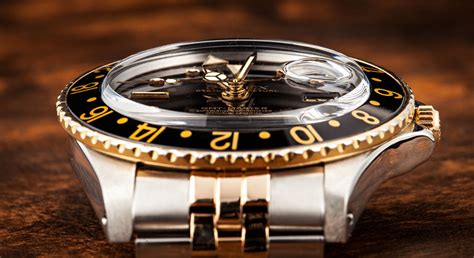what watches did rolex use plastic | rolex acrylic crystals what watches did rolex use plastic Rolex used acrylic in their watches, but slowly began introducing a synthetic sapphire replacement similar to the one in the image above. Rolex’s first sapphire crystal appeared on the Oyster Quartz in 1970 and then again in the Submariner in 1981. A new shock for aggressive trail riders
0 · watch rolex crystal
1 · rolex synthetic crystals
2 · rolex crystals history
3 · rolex crystals for vintage watches
4 · rolex crystals
5 · rolex crystal review
6 · rolex acrylic crystals
7 · are rolex watches made with crystals
Alex Blackbird. 686 subscribers. Subscribed. 22. 1.2K views 5 years ago. TakeHold LV's overview or SoiLL's Free Range LV climbing shoe, by Dr. Leandra Hernadez For reviews and more,.
Rolex used acrylic in their watches, but slowly began introducing a synthetic sapphire .
Depending on the era that they were made, Rolex watches can either have acrylic (a.k.a. plastic) crystals or sapphire crystals. First came acrylic (Polymethyl methacrylate), which is a transparent thermoplastic that was used as a shatter-resistant alternative to glass.Rolex used acrylic in their watches, but slowly began introducing a synthetic sapphire replacement similar to the one in the image above. Rolex’s first sapphire crystal appeared on the Oyster Quartz in 1970 and then again in the Submariner in 1981.While all modern Rolex watches are fitted with crystals craft from highly scratch-resistant synthetic sapphire, older Rolex timepieces were manufactured with crystals made from a plastic-like material known as acrylic.
It is actually a neat intellectual exercise to think that certain watches that represent luxury and success were fitted with what amounts to a piece of plastic over the dial. Staple Rolex models such as the Datejust and the Day-Date utilized acrylic crystals for years, and I doubt many would consider those to be tool watches.
There have been several watches out there with plastic parts, including, I think, some Omegas. There are some advantages to plastic in being self-lubricating and not wearing down (not that's it's always a good thing).By 1991, the Rolex Perpetual was the last watch to possess an acrylic crystal. Further details can be found in the graph below: Rolex sapphire crystal and other glassRolex watches use a special type of crystal known as sapphire crystal, which is known for its strength, clarity, and scratch resistance. In this article, we will explore the different types of Rolex watch crystals, how they are made, and how to care for them.

Acrylic, also known as Plexiglas or Lucite, is a type of plastic that is commonly used in Rolex watches. Acrylic is a lightweight and flexible material that is resistant to scratches and impact. However, it is not as durable as sapphire, and over time it can yellow and become brittle. For years, most of the Rolex sports line possessed acrylic crystals because of these properties. Rolex’s first sapphire crystal appeared on the OysterQuartz in 1970 and the Submariner in 1981. The Rolex Perpetual was the last watch to possess a sapphire crystal which was not until 1991.
Rolex used acrylic crystals until the late 1980s, at which point they switched to sapphire. While an acrylic (plastic) crystal can be polished to remove scratches , a sapphire crystal is largely scratch-proof.
Depending on the era that they were made, Rolex watches can either have acrylic (a.k.a. plastic) crystals or sapphire crystals. First came acrylic (Polymethyl methacrylate), which is a transparent thermoplastic that was used as a shatter-resistant alternative to glass.Rolex used acrylic in their watches, but slowly began introducing a synthetic sapphire replacement similar to the one in the image above. Rolex’s first sapphire crystal appeared on the Oyster Quartz in 1970 and then again in the Submariner in 1981.While all modern Rolex watches are fitted with crystals craft from highly scratch-resistant synthetic sapphire, older Rolex timepieces were manufactured with crystals made from a plastic-like material known as acrylic. It is actually a neat intellectual exercise to think that certain watches that represent luxury and success were fitted with what amounts to a piece of plastic over the dial. Staple Rolex models such as the Datejust and the Day-Date utilized acrylic crystals for years, and I doubt many would consider those to be tool watches.
There have been several watches out there with plastic parts, including, I think, some Omegas. There are some advantages to plastic in being self-lubricating and not wearing down (not that's it's always a good thing).
watch rolex crystal
By 1991, the Rolex Perpetual was the last watch to possess an acrylic crystal. Further details can be found in the graph below: Rolex sapphire crystal and other glass
Rolex watches use a special type of crystal known as sapphire crystal, which is known for its strength, clarity, and scratch resistance. In this article, we will explore the different types of Rolex watch crystals, how they are made, and how to care for them.Acrylic, also known as Plexiglas or Lucite, is a type of plastic that is commonly used in Rolex watches. Acrylic is a lightweight and flexible material that is resistant to scratches and impact. However, it is not as durable as sapphire, and over time it can yellow and become brittle. For years, most of the Rolex sports line possessed acrylic crystals because of these properties. Rolex’s first sapphire crystal appeared on the OysterQuartz in 1970 and the Submariner in 1981. The Rolex Perpetual was the last watch to possess a sapphire crystal which was not until 1991.
rolex synthetic crystals
Fox Racing Shox Float DPS EVOL Factory shock is a versatile and responsive rear shock that can handle a wide range of terrain and riding styles. It features a dual piston system, an extra volume .
what watches did rolex use plastic|rolex acrylic crystals




























